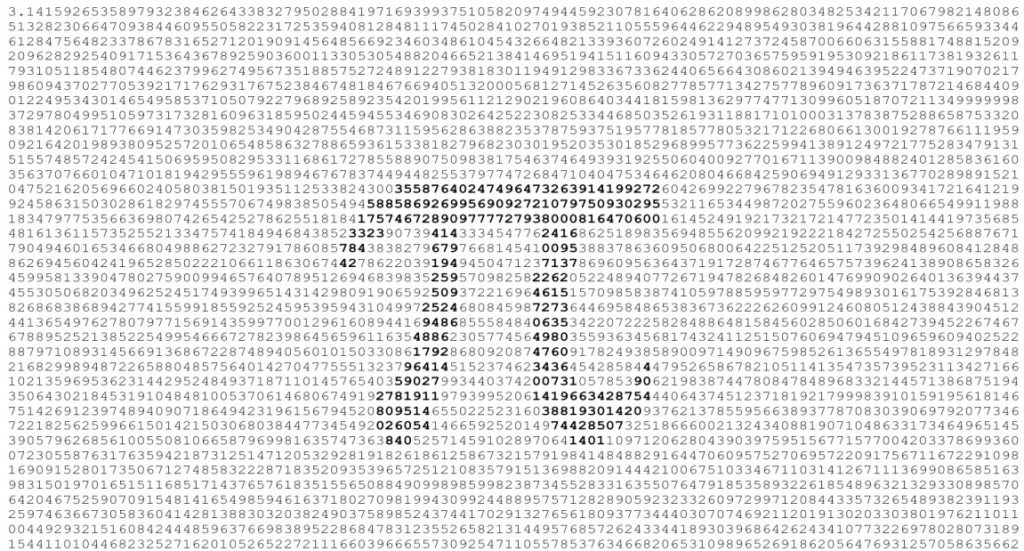
Shaw eventually built the "Pi Shrine" at the Exploratorium, a circular classroom with a circular brass plaque at its center. The first π Day celebration was nothing more than Shaw and his wife handing out slices of fruit pie and tea at 1:59 PM (the three digits following 3.14), but the holiday quickly gained fame in the Bay Area. Keep reading to learn how you, too, can celebrate National Pi Day.Įven better, March 14 is also Albert Einstein's birthday, making π Day the ultimate geeky double-header. The fact that pi can be found everywhere - not only in circles, but in arcs, pendulums and interplanetary navigation - and that it's infinitely long has inspired a cult following that includes plenty of geeky tattoos and even its own national holiday. The symbol's use was later popularized by 18th-century Swiss mathematician Leonhard Euler but wasn't adopted worldwide until 1934. In 1706, the self-taught Welsh mathematician William Jones assigned the Greek letter π to this magical number without end, possibly because π is the first letter of the Greek words for periphery and perimeter. The Greek mathematician Archimedes (287-212 B.C.E.) and the Chinese mathematician Zu Chongzhi (429-501 C.E.) are co-credited with calculating the most accurate approximations of pi before calculus and supercomputers gave us the definitive answer. The ancient Egyptians came up with 3.1605. When the ancient Babylonians attempted to measure the precise areas of circles back in 1900 B.C.E., they assigned a value to pi of 3.125. Pi is critical to several basic calculations in geometry, physics and engineering, including the area of a circle (πr2) and the volume of a cylinder (πr2)h. If the ratio was different, it wouldn't be a circle."Īs you might imagine, 4.0 (the circumference) / 1.27 (the diameter) = 3.14. As one mathematician put it, "Pi is part of the nature of the circle. Divide the circumference of the known universe by its diameter - you get the point. Divide the circumference of the planet Mars by its diameter and you get 3.14. Divide the circumference of a tennis ball by its diameter and you get 3.14. But what's remarkable is that no matter the size of the circle you are measuring, that ratio of circumference to diameter will always equal 3.1415926535897, usually shortened to 3.14.

The definition of pi is simple: It's the ratio of a circle's circumference divided by its diameter. The digits of Pi have been calculated out to more than 22 trillion decimal places without ever repeating (that's called an " irrational number"). It's the rarest of mathematical constants, an unfailingly accurate ratio that's also neverending. Pi has mesmerized mathematicians for 4,000 years.

Pi is an extremely interesting number that is important to all sorts of mathematical calculations.


 0 kommentar(er)
0 kommentar(er)
